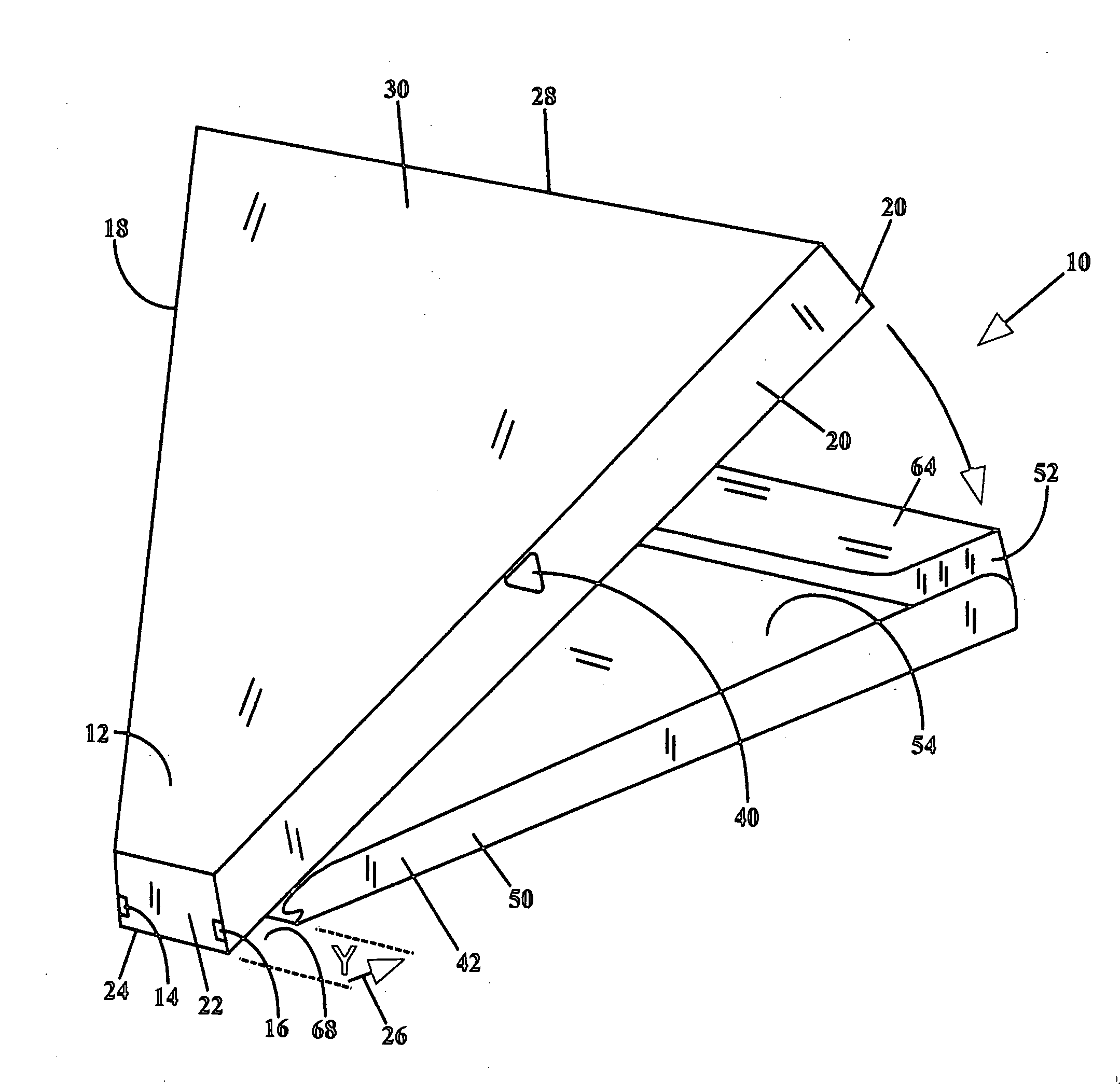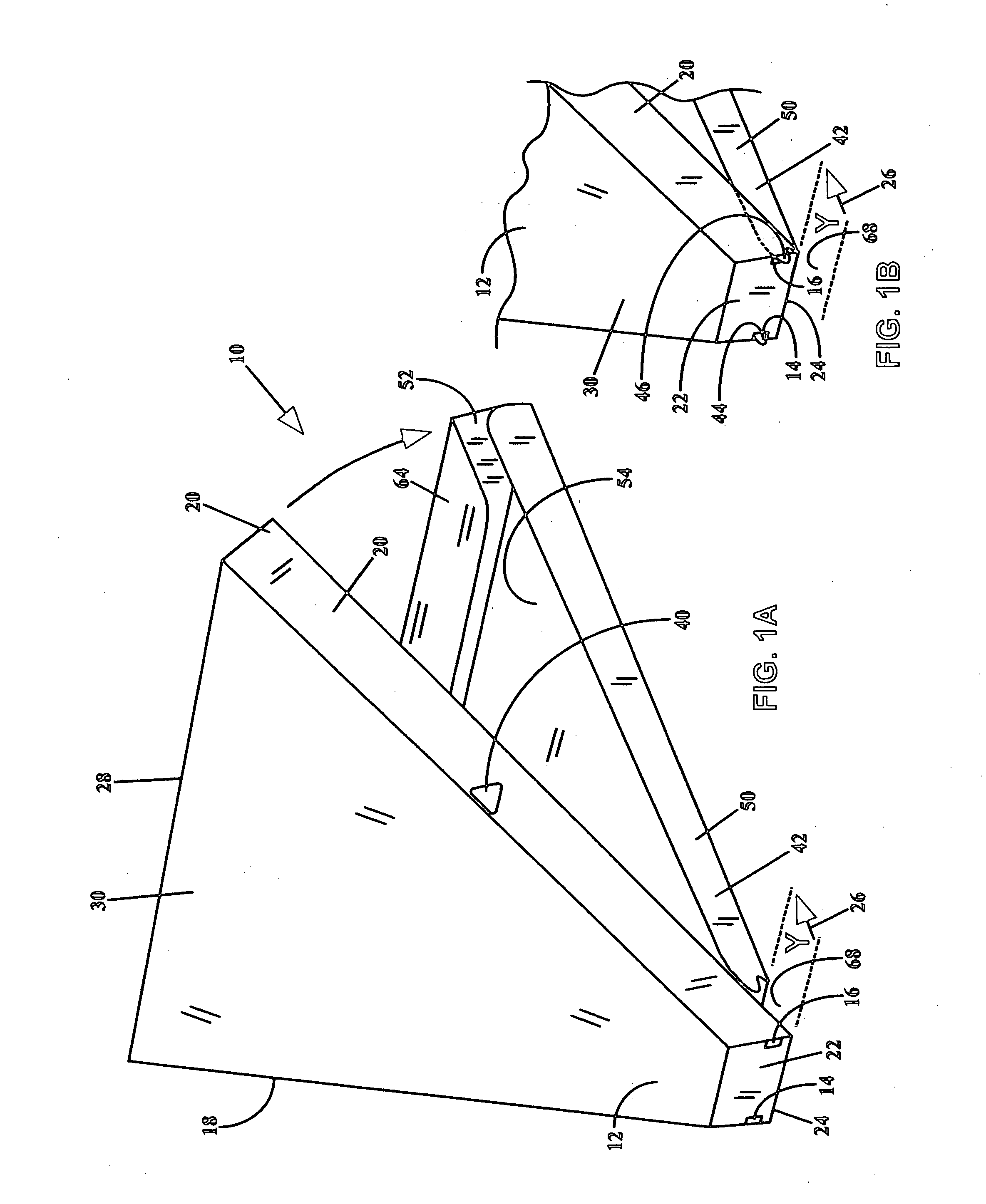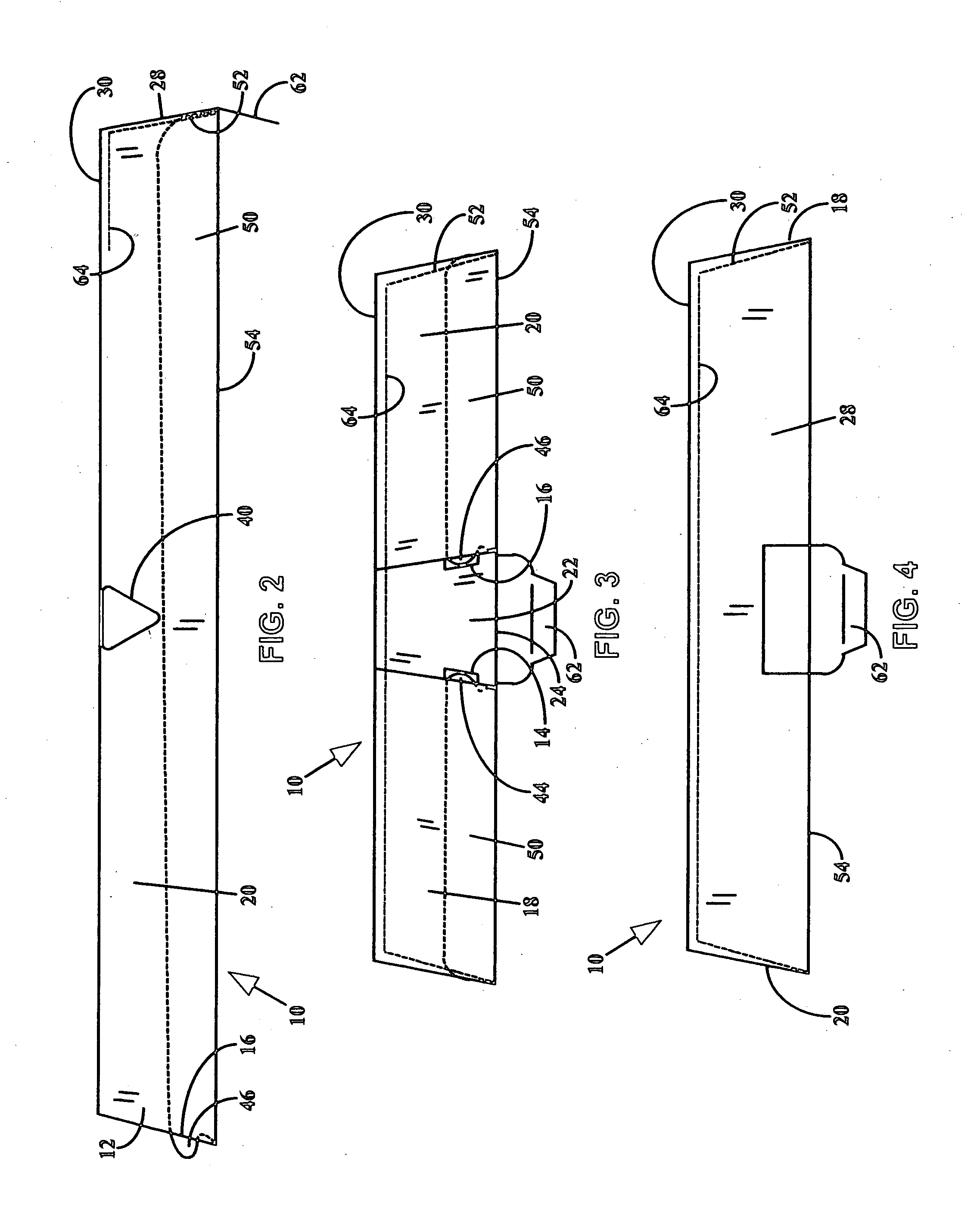Two-piece food-serving apparatus with separable and optionally re-attachable hinge
- Summary
- Abstract
- Description
- Claims
- Application Information
AI Technical Summary
Benefits of technology
Problems solved by technology
Method used
Image
Examples
Embodiment Construction
[0041] With reference to the drawings, a preferred embodiment of the invention is depicted in FIGS. 1A and 1B wherein a separable two-piece food-serving apparatus 10 having an apertured lid 12 or upper casing is comprised of a lid upper wall 30, a lid rear wall 28, a lid first side wall 18, a lid second side wall 20, and a lid front wall 22, wherein at least one wall has at least one partial-hinge aperture sized and shaped to receive an outwardly-extending partial-hinge tab of the apparatus tray. Optionally, a lid high-speed production vent is included in one or more sides of the lid and is sized and shaped to provide for high-speed package production when the apparatus is made of a paper-based material. For optimum venting and aesthetic purposes the vent(s) 40 are preferably located at a height on the side wall(s) wherein a lower edge of the vent is higher than the upper edge of the wall(s) when the lid 12 is rotated to a lowest position.
[0042] Preferably the present invention als...
PUM
 Login to View More
Login to View More Abstract
Description
Claims
Application Information
 Login to View More
Login to View More - R&D
- Intellectual Property
- Life Sciences
- Materials
- Tech Scout
- Unparalleled Data Quality
- Higher Quality Content
- 60% Fewer Hallucinations
Browse by: Latest US Patents, China's latest patents, Technical Efficacy Thesaurus, Application Domain, Technology Topic, Popular Technical Reports.
© 2025 PatSnap. All rights reserved.Legal|Privacy policy|Modern Slavery Act Transparency Statement|Sitemap|About US| Contact US: help@patsnap.com



